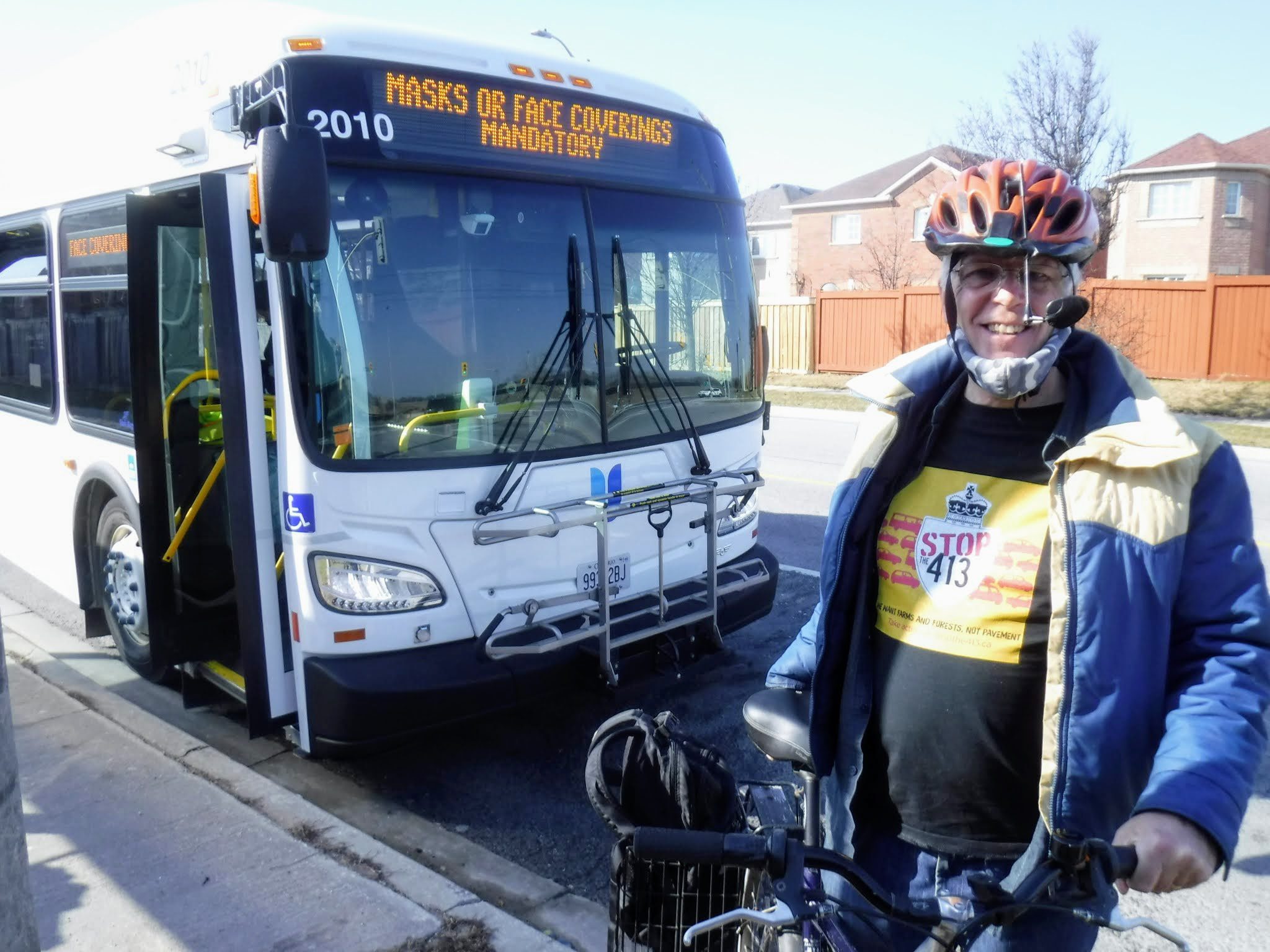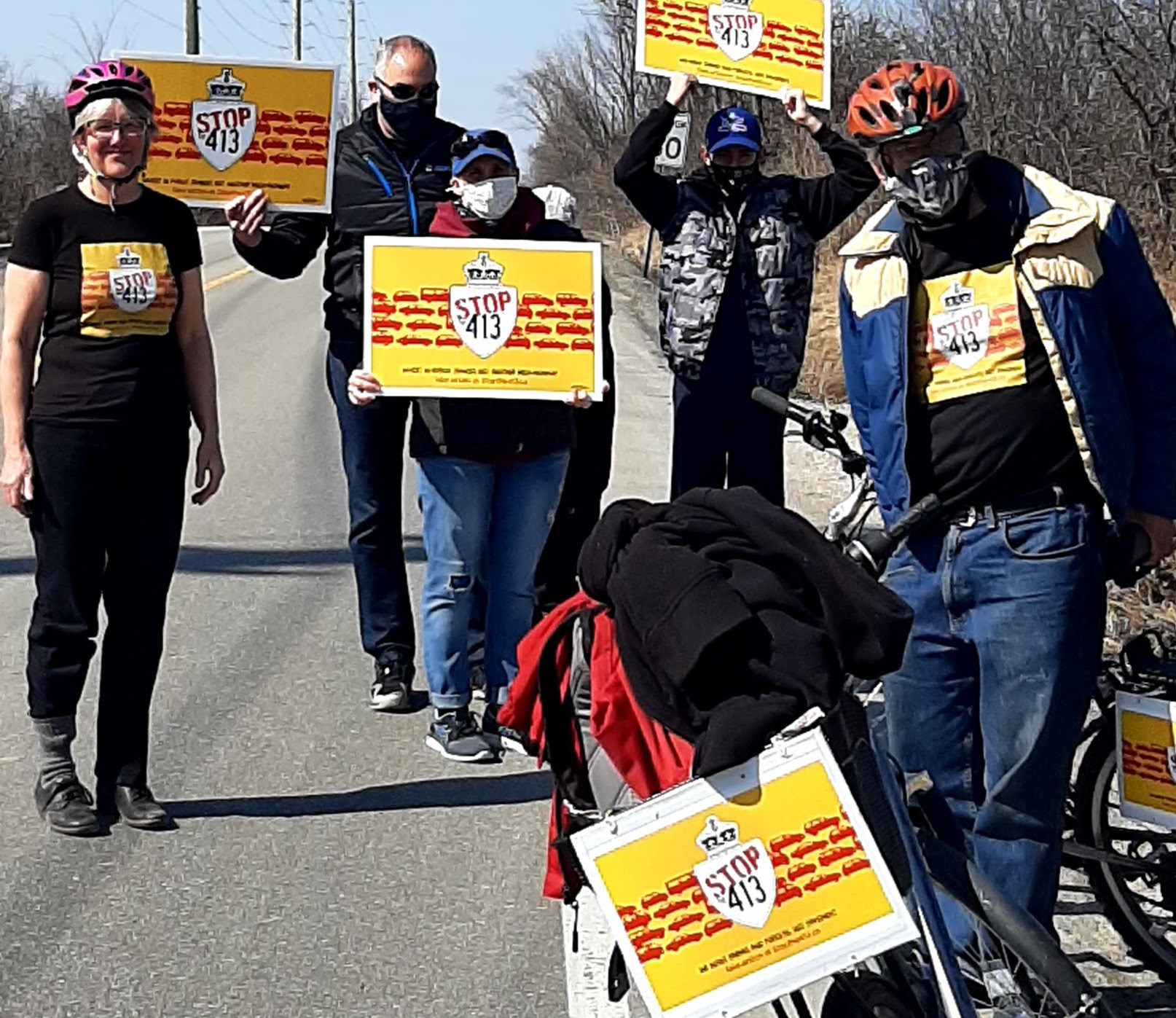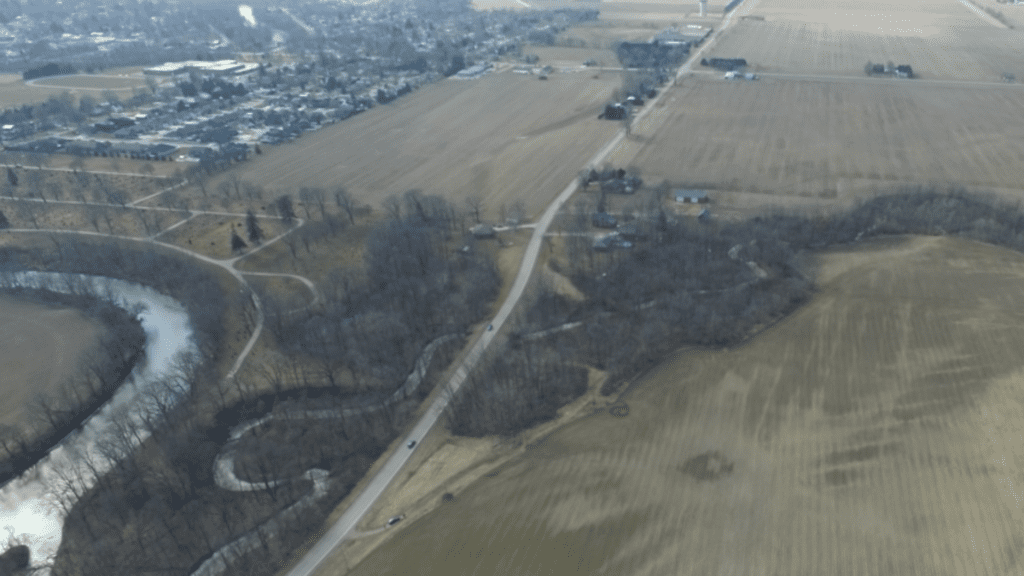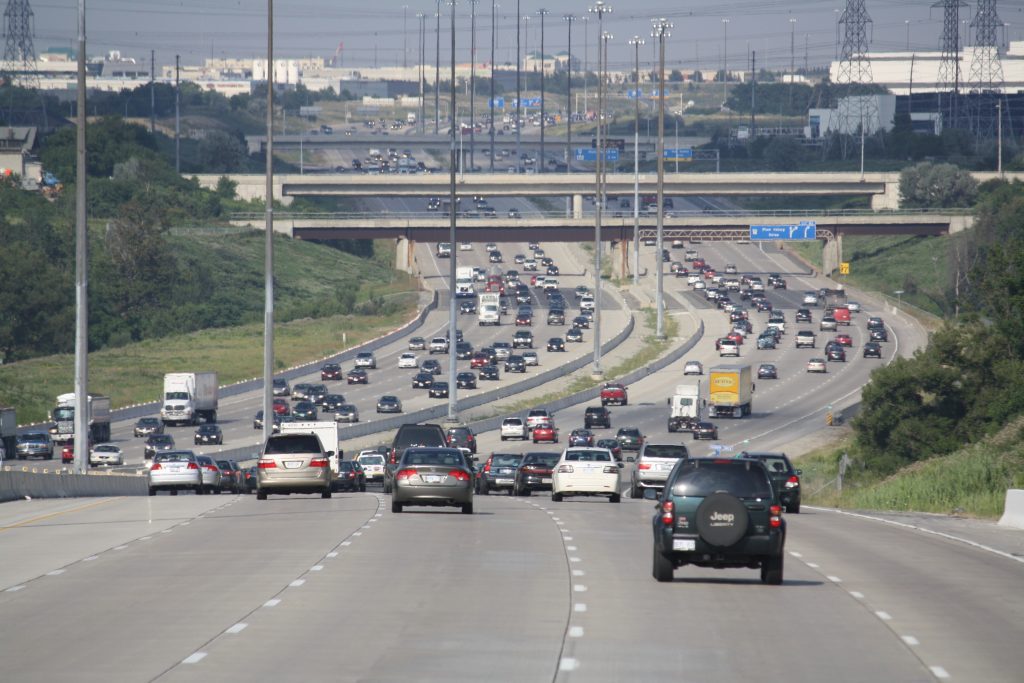This is a guest blog by Anne Purvis
On Easter Sunday, my daughter Frances, and her husband Kristen, and my husband Jim, and I biked the proposed route of the 413. We wanted to see the agricultural and natural heritage lands that would be destroyed by the building of this ‘zombie’ highway.
We wore signs and T-shirts which alerted many passersby to why we were there. We were also met on the road, and encouraged along the way, by many advocacy groups from Laskay, Vaughan, Brampton and Caledon – municipalities that will be deeply impacted by the highway.


We made it a car free day, and got to the starting point at Kirby Rd and Jane St by public transit from our home in Toronto. We took the University subway line to the Pioneer Village station and put our bikes on a York Region Transit bus that took us most of the way up Jane. The return trip was on an incredibly fast express bus from Meadowvale Go in Mississauga, and then we TTC’d it from Union Station. How exhilarating to find out we could reach such beautiful countryside by public transit! It came home to us how connected we are to this region and how impacted our Toronto wildlife corridors are by land use decisions in this area.
Our route was roughly 60 km long and went along Kirby Rd, Healey Rd, Old School Road, and down Heritage Rd, which becomes Meadowvale Rd in Mississauga. It passes through the so-called Whitebelt land (farmland and natural areas that are adjacent to the Greenbelt) that lies between the municipalities of Brampton in the south and Bolton and Caledon in the north.


We passed over many creeks and the Humber and Credit Rivers that sparkled in the sun. Old Maple trees lined the fields and an old split rail fence or two graced the view. Corn and winter wheat fields stretched in every direction. Eventually we had a distant view of the Escarpment. There were signs of family farms that still produce honey, eggs, and fruit and vegetables for local consumption. We heard early migrant songbirds — Red-winged Blackbirds, Song sparrows, Kinglets. We also saw a pair of Trumpeter Swans and a Killdeer taking advantage of an ephemeral pond. We thought we heard a chorus of Wood Frogs, but weren’t absolutely sure. This is beautiful country and part of the natural heritage of Ontario for sure.
In chatting with some of the local advocates who met us or biked with us, we learned that this is better farmland than further north in the Greenbelt. We were reminded of the confusion of local residents who are being offered millions of dollars to sell their land and their homes. We were informed that the interchange of 413 and 400 is proposed to sit right on the town of Laskay.


Moreover, if Highway 413 is built, salt and toxins will wash off the highway into the rivers and streams, degrading them for wildlife. And of course the footprint of the highway will stretch kilometers in every direction as aggregate will be mined close to the construction zone.
We could see the creep of sprawling development, particularly north from Brampton towards Healy Rd and west towards Heritage Rd. There were ‘For Sale’ signs on acreages where developers believe the highway will bring interchanges, warehouses, or suburbs. There were billboards announcing ‘Another Project by….’ The value of this land needs to be energetically embraced and significant restoration undertaken. It won’t be an easy matter to get this land back into agricultural production.
We were asked, ‘You are from Toronto. This highway will go nowhere near your home. Why should Torontonians want to save these Whitebelt lands from Highway 413?
The answer is that land use issues in the Greater Golden Horseshoe affect everyone living in the whole region including Torontonians.


The first issue is the matter of eating locally grown food. Torontonians love their farmers’ markets. We want to eat food grown within 100 kilometers of home. We know it is not sustainable in an era of climate change to burn oil and gas bringing our food from far away. Why should we build highways and warehouses on perfectly good farmland to store food grown thousands of kilometers away? The pandemic has also shown us that supply lines worldwide are fragile.
The GTA is also rich in wildlife diversity. Toronto sits on the north shore of Lake Ontario and as such witnesses the Songbird, Hawk and Arctic Duck migrations. Every fall, the salmon migrate up our rivers to spawn. Monarch Butterflies gather at the Leslie St Spit for their epic migration to Mexico. Migratory species need stopover habitat. Local species need forest and meadow habitat to make their homes. In Toronto, we are working hard to restore our river valleys and ravines to improve them for wildlife. A lot of this habitat is in the river valleys of the Humber and the Credit. These rivers have their origins in the Oak Ridges Moraine, pass through this area, and flow through Toronto to Lake Ontario. These rivers and their drainage basins are the responsibility of all of us from the whole region.
We also know that land has a value beyond its usefulness to us. We have been learning from our Indigenous people that land is more than a commodity to be bought and sold for the enrichment of the few. It took 12,000 years since the retreat of the glaciers to build the soil that nourishes us. It is part of being human to live in a grateful attitude to the soil that sustains us.
Highway 413 must be stopped, and a fixed urban boundary put in place. New development should be dense and around transit hubs–the vision of the Greater Golden Horseshoe Growth Plan of 2015-17. Here is a webinar that explains this. The Ontario Government has other options to solve the transportation problems of the region. The Ontario Government should channel its pro-business energy into the Agricultural industry. Learn more about the forces arrayed against saving this land from the 413.
If you would like to have a say in this issue, the Ontario government is canvassing public opinion right now.


Jim and Anne are a retired Toronto couple, who raised six kids in East York. Jim was in financial services for many years and Anne worked for Scientists in School. She now does part-time tutoring of kids struggling with learning to read. Anne and Jim re-booted and run the Juniors program for the Toronto Field Naturalists. Two years ago Anne was a recipient of a PollinateTO grant and worked with others to restore a large church garden with native plants. Anne and Jim have a long-standing concern for environmental and particularly land-use issues. They have owned and managed a 200 acre conservation property in Northumberland county for 30 years–tree-planting and removing invasive species etc. Their most recent endeavour is to become Lead Stewards with the City of Toronto, so they run stewardship groups for ravine restoration.







